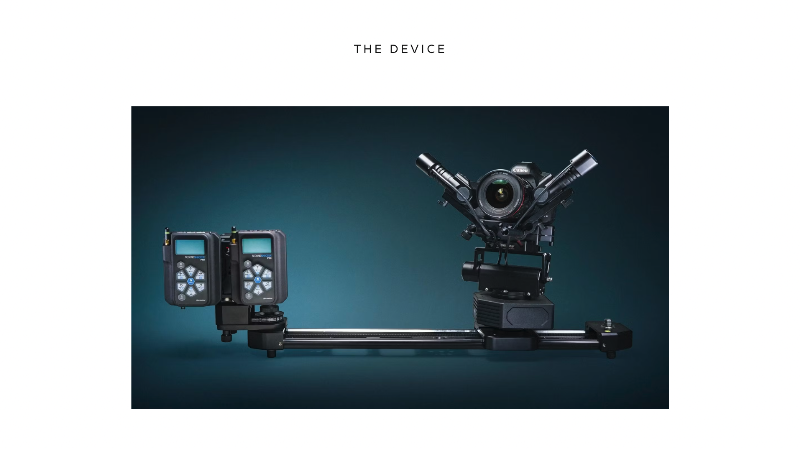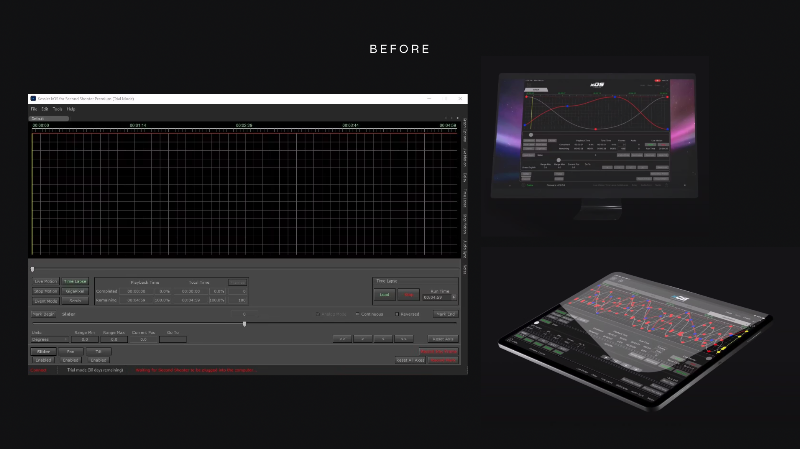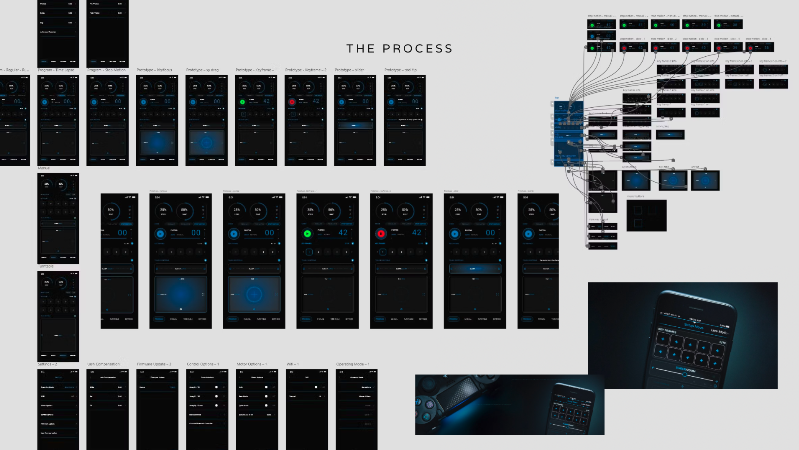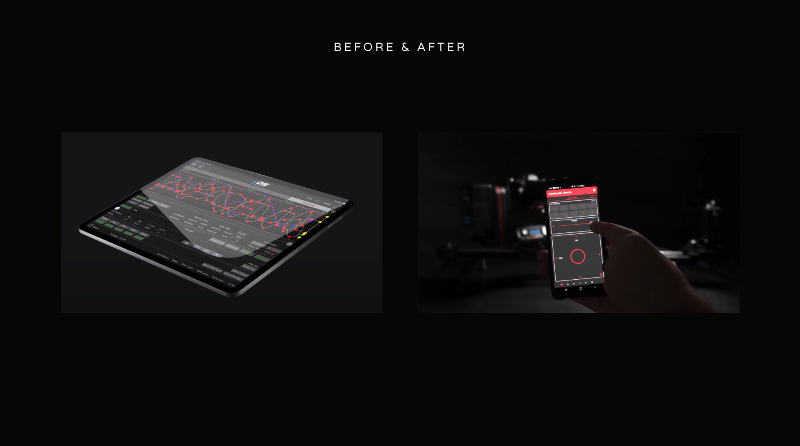Camera Motion Control App
Reimagined a tablet-only camera control system into an innovative, mobile-first app with haptic feedback, enabling single-handed, eyes-off operation for filmmakers.




The Challenge
I was tasked with reimagining a camera motion control system's mobile experience that had several critical issues: Desktop software ported to tablets with little adaptation, unusable on phones, complicated interface, difficult to operate in challenging conditions, needed to maintain functionality while improving usability, and required consistency with the company's design language.
My Approach
Discovery
I embedded myself in the filmmaking process, traveling with film crews, conducting contextual interviews, documenting pain points, analyzing competing tools, and identifying opportunities for innovation based on real-world usage.
Strategy
Based on research, I focused on a mobile-first experience, enabling single-handed operation, implementing haptic feedback to reduce visual dependency, simplifying the interface while maintaining functionality, and aligning with the company's visual identity.
Iteration
My design process included creating rapid prototypes tested in field conditions, developing a custom haptic language, iterative testing with professional filmmakers, refining based on real-world feedback, and collaborating with developers on technical feasibility.
The Solution
The final mobile app delivered:
- A complete redesign optimized for phone screens but scalable to tablets
- One-handed operation through thoughtful layout and gesture controls
- Advanced haptic feedback system allowing 'eyes-off' operation
- Context-aware interface that adapted to different shooting scenarios
- Streamlined workflows for common motion control tasks
- Consistent visual identity with the company's broader ecosystem
Video Overview
Results
The redesigned mobile experience transformed how filmmakers used the motion control system:
- Successfully replaced the tablet app as the primary control interface
- Became the preferred method for controlling flagship camera systems
- Significantly reduced setup time on film sets
- Enabled new shooting techniques previously limited by control constraints
- Received overwhelming positive feedback from professional users
- Strengthened the company's reputation for innovation and user-centered design
Key Learnings
- Field observation reveals insights that can't be discovered in the studio
- Understanding the physical context of use is essential for effective design
- Haptic feedback can transform user experience in visually demanding environments
- Maintaining functionality while simplifying interfaces requires deep domain knowledge
- Sometimes the best solution requires completely rethinking interaction models